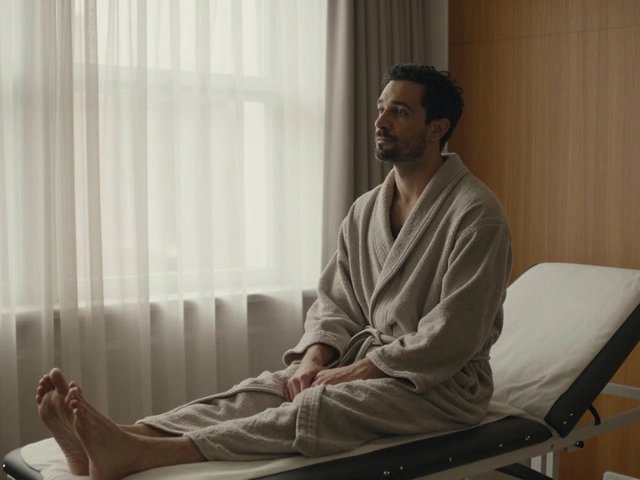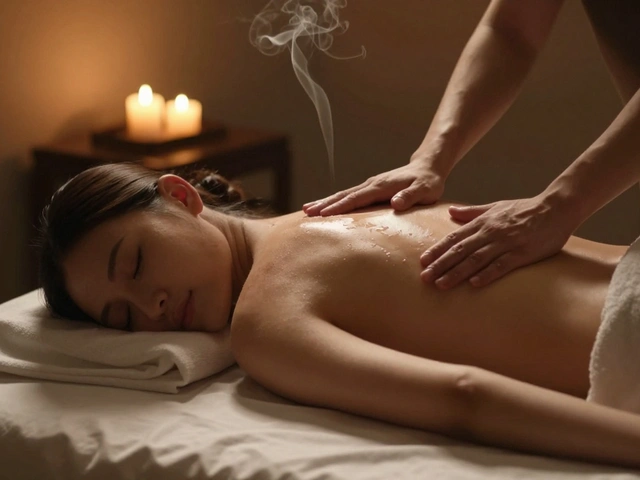The History of Body Massage: From Ancient Times to Modern Day
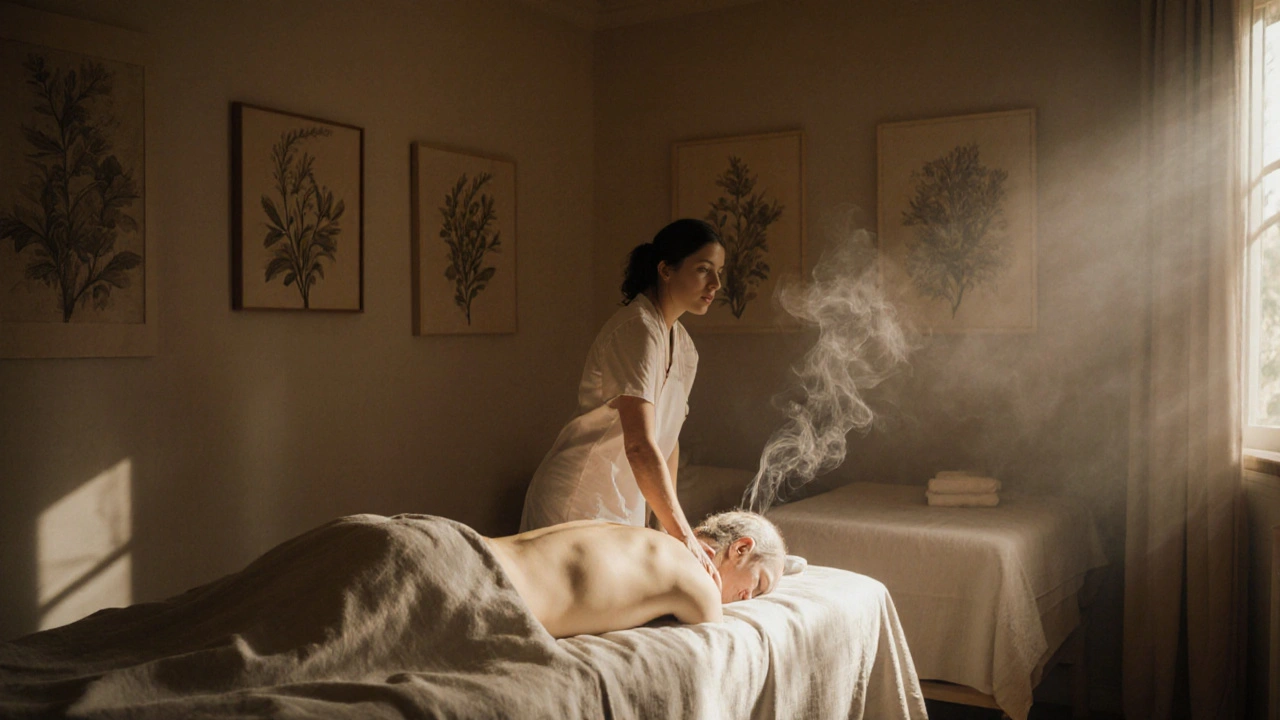
The History of Body Massage: From Ancient Times to Modern Day
When you think of body massage, you might picture a quiet room, soft music, and hands working out the knots in your shoulders. But this simple act has roots stretching back thousands of years-across continents, cultures, and civilizations. It wasn’t invented in a spa in Bali or a luxury hotel in New York. It was born in the daily rituals of healers, warriors, and families who understood touch as medicine. Today, body massage is everywhere: from physical therapy clinics to yoga studios, from airport chairs to self-massage tools you can buy online. But its story? That’s far richer than most people realize.
Understanding the Basics of Body Massage
Origins and History
The earliest records of body massage come from ancient China, around 2700 BCE, documented in the Huangdi Neijing, one of the foundational texts of Traditional Chinese Medicine. Practitioners used pressure points and strokes to balance energy flow-what we now call Qi. Around the same time, in India, Ayurvedic texts described Abhyanga, a full-body oil massage meant to detoxify and energize. These weren’t luxury treatments-they were essential health practices.
By 1500 BCE, Egyptians were carving massage scenes into tomb walls, showing priests using rhythmic movements on the sick. The Greeks later adopted and refined these techniques. Hippocrates, often called the father of Western medicine, wrote about the need to "rub the body" to restore health. Romans took it further, building public bathhouses where massage was part of daily hygiene and social life. In each culture, touch wasn’t just comfort-it was a way to heal, connect, and restore balance.
Core Principles or Components
At its heart, body massage is about applying pressure, movement, and rhythm to soft tissues-muscles, tendons, ligaments, and fascia. The goal isn’t just to feel good (though that’s a big part of it). It’s to improve circulation, release tension, reduce inflammation, and stimulate the nervous system. Different styles focus on different goals: Swedish massage uses long, flowing strokes to relax; deep tissue targets chronic muscle tightness; Thai massage combines stretching with acupressure.
Regardless of style, all effective body massage shares three core principles: intention, rhythm, and pressure. The therapist doesn’t just move hands-they listen with their touch. The rhythm of the strokes matches the breath. Pressure is adjusted based on feedback, not a fixed rule. This is why two people can get the same type of massage and have completely different experiences.
How It Differs from Related Practices
People often confuse massage with other bodywork practices. Here’s how body massage stands apart:
| Practice | Key Feature | Primary Benefit |
|---|---|---|
| Body Massage | Manual manipulation of soft tissues using hands, forearms, or tools | Relieves muscle tension, improves circulation |
| Chiropractic Adjustment | Manipulation of spinal joints | Corrects alignment, reduces nerve pressure |
| Acupuncture | Insertion of fine needles into specific points | Regulates energy flow, reduces pain signals |
| Physical Therapy | Exercise-based rehabilitation with manual techniques | Restores mobility after injury |
Body massage doesn’t claim to realign bones or stimulate nerves with needles. It works directly on the muscles and connective tissue. That makes it uniquely accessible-it doesn’t require special equipment or diagnosis. Just hands, time, and intention.
Who Can Benefit from Body Massage?
Almost everyone. Athletes use it to recover faster. Office workers relieve neck and back tension. New parents find relief from sleep deprivation stress. Seniors maintain mobility. Even people with chronic conditions like arthritis or fibromyalgia often report improved comfort with regular massage.
It’s not a cure-all, but it’s a powerful tool for managing daily stress. Research from the National Institutes of Health suggests massage can lower cortisol (the stress hormone) and increase serotonin and dopamine-chemicals linked to mood and relaxation. You don’t need to be in pain to benefit. Sometimes, you just need to be held-gently, safely, and without judgment.
Benefits of Body Massage for Body and Mind
Stress Reduction
Stress isn’t just in your head-it lives in your shoulders, your jaw, your lower back. Body massage directly interrupts the stress response. When hands apply steady pressure, the parasympathetic nervous system kicks in. Your heart rate slows. Your breathing deepens. Your body shifts from "fight or flight" to "rest and digest."
One study from the Touch Research Institute at the University of Miami found that participants who received regular massage reported up to a 50% reduction in perceived stress after just six sessions. It’s not magic-it’s biology. Your nervous system responds to safe, rhythmic touch like a lullaby.
Enhanced Functionality
Think of your muscles like ropes. If they’re constantly tight, they don’t move well. Over time, that leads to stiffness, poor posture, and even joint pain. Body massage helps release those knots, allowing muscles to lengthen and move freely. Athletes swear by it for performance, but so do people who sit at desks all day.
Improved flexibility and range of motion mean you can bend, reach, and turn without discomfort. For older adults, this can mean the difference between staying independent and needing help with daily tasks.
Emotional Well-Being
Touch is one of the first senses we develop-and one of the most powerful for emotional connection. In cultures where physical affection is rare, a professional massage can feel like a rare gift. Many people report crying during their first session-not from pain, but from relief. It’s the first time in weeks they’ve allowed themselves to truly relax.
Massage doesn’t replace therapy, but it creates space for emotional release. The safety of a professional setting, the absence of judgment, the simple act of being cared for-these things matter more than we admit.
Practical Applications
Body massage isn’t just for spas. It’s used in hospitals to help patients recover from surgery. In neonatal units, gentle touch helps premature babies gain weight faster. In prisons, massage programs have reduced aggression and anxiety. Even in workplaces, some companies now offer on-site chair massage to boost productivity and morale.
| Benefit | Description | Impact |
|---|---|---|
| Reduced Muscle Tension | Breaks down adhesions and knots in soft tissue | Less pain, better movement |
| Improved Sleep | Calms the nervous system, promotes deeper rest | More restful nights, less fatigue |
| Lower Blood Pressure | Relaxes blood vessels through circulation boost | Supports heart health |
| Boosted Immunity | Increases white blood cell activity | Less frequent illness |
What to Expect When Engaging with Body Massage
Setting or Context
A good massage setting feels calm, private, and warm. Think dim lighting, soft music, clean linens, and a quiet space where you won’t be interrupted. It doesn’t need to be fancy-a quiet room at home with a massage table or even a firm bed works fine. The key is safety and comfort. You should feel like you can let go.
Key Processes or Steps
Most sessions start with a quick chat about your goals and any areas of concern. Then you’re left alone to undress (you’ll be covered with a sheet the whole time). The therapist uses oil or lotion to reduce friction. They begin with lighter strokes to warm the tissue, then gradually increase pressure. Techniques vary-long gliding strokes, circular motions, kneading, tapping. The session ends with gentle strokes to help you transition back to awareness.
Customization Options
There’s no one-size-fits-all massage. You can choose pressure level (light, medium, firm), duration (30, 60, 90 minutes), and focus areas (back, neck, feet). Some people want full-body relaxation. Others need focused work on a sore shoulder. A good therapist will adjust on the fly.
Communication and Preparation
Speak up. If the pressure is too much, say so. If you’re cold, ask for a blanket. If you don’t like music, request silence. This is your time. No therapist will judge you for being honest. Arrive a few minutes early to fill out any forms. Drink water afterward-it helps flush out released toxins.
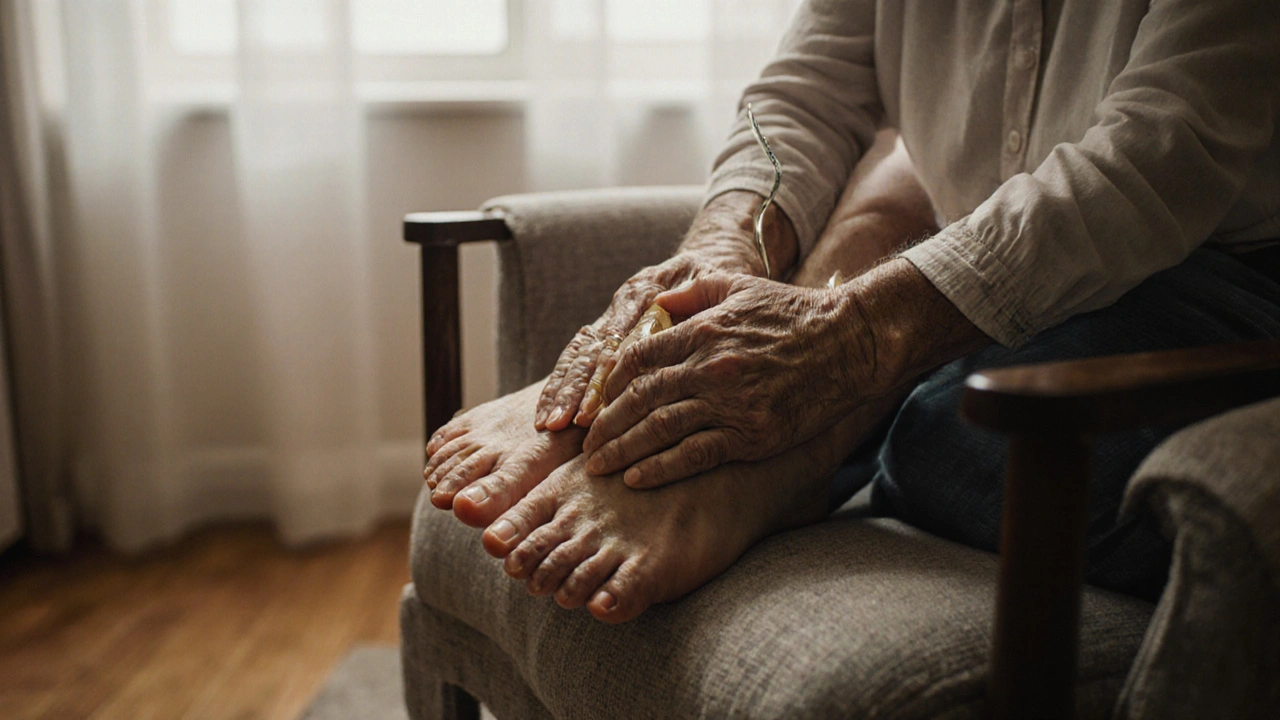
How to Practice or Apply Body Massage
Setting Up for Success
If you’re giving a massage at home, warm the room. Use a massage oil or lotion that glides easily-coconut, almond, or jojoba work well. Have clean towels ready. Play soft music or nature sounds. Turn off your phone. This isn’t a chore-it’s an act of care.
Choosing the Right Tools/Resources
For professional sessions, look for licensed therapists. In the UK, check the Complementary and Natural Healthcare Council (CNHC) registry. For self-massage, foam rollers, massage balls, or handheld devices can help. But nothing replaces human touch for deep relaxation.
Step-by-Step Guide
1. Start with the back-use both palms to glide from the lower back up to the shoulders. Use slow, steady pressure.
2. Move to the shoulders-knead gently with your thumbs in circular motions.
3. Work down the arms-use your hands to stroke from shoulder to wrist.
4. Finish with the legs-glide from hips to ankles, using both hands.
5. Always end with light, soothing strokes. Don’t rush.
Tips for Beginners or Couples
Don’t aim for perfection. Focus on presence. If you’re giving a massage to a partner, ask what feels good. Use your whole hand, not just fingers. Warm the oil in your palms first. And remember: silence is okay. Sometimes, the best part is just being together without talking.
FAQ: Common Questions About Body Massage
What to expect from body massage?
You’ll lie on a table, covered with a sheet. The therapist will leave the room while you undress. They’ll use oil or lotion and work on your muscles with their hands. You might feel some pressure, but it shouldn’t hurt. If it does, speak up. Most people feel deeply relaxed afterward-some even fall asleep. It’s normal to feel a little sore the next day if it was a deep tissue session, but you should feel lighter overall.
What happens during body massage?
During a typical session, the therapist begins with broad, gentle strokes to warm the tissue. Then they move to deeper work on areas of tension-using kneading, friction, or compression. They’ll adjust pressure based on your feedback. The session usually lasts 30 to 90 minutes. You’ll be covered at all times, and only the area being worked on is exposed. The goal is to release muscle tightness and calm your nervous system.
How does body massage differ from chiropractic care?
Body massage works on soft tissues-muscles, tendons, fascia. Chiropractic care focuses on bones and joints, especially the spine. A chiropractor might crack your back to realign vertebrae. A massage therapist won’t. Instead, they’ll loosen the muscles around those bones so they don’t pull them out of place. The two can work well together, but they’re different tools for different problems.
What is the method of body massage?
There’s no single method. Swedish massage uses long strokes and kneading for relaxation. Deep tissue targets chronic tension with slower, firmer pressure. Sports massage focuses on athletes’ needs. Thai massage includes stretching and acupressure. Shiatsu uses finger pressure along energy lines. The method depends on the therapist’s training and your goals. The best approach is the one that feels right for your body.
Safety and Ethical Considerations
Choosing Qualified Practitioners/Resources
Look for licensed or registered therapists. In the UK, membership with organizations like the Complementary and Natural Healthcare Council (CNHC) or the Federation of Holistic Therapists (FHT) means they’ve met basic training and ethics standards. Avoid anyone who claims massage can cure diseases. It helps manage symptoms-it doesn’t replace medical care.
Safety Practices
| Practice | Purpose | Example |
|---|---|---|
| Hygiene | Prevents infection | Therapist washes hands, uses clean linens |
| Consent | Respects boundaries | Asking permission before touching sensitive areas |
| Pressure Control | Prevents injury | Adjusting pressure based on feedback, not assumptions |
Setting Boundaries
You have the right to say no to any technique, pressure level, or body area. If someone makes you uncomfortable, stop the session. A professional will respect your limits without question. Trust your gut-if something feels off, it probably is.
Contraindications or Risks
Body massage isn’t safe for everyone. Avoid it if you have an active infection, fever, blood clots, open wounds, or recent surgery. People with severe osteoporosis or certain cancers should consult a doctor first. Always tell your therapist about your medical history-even if you think it’s irrelevant.
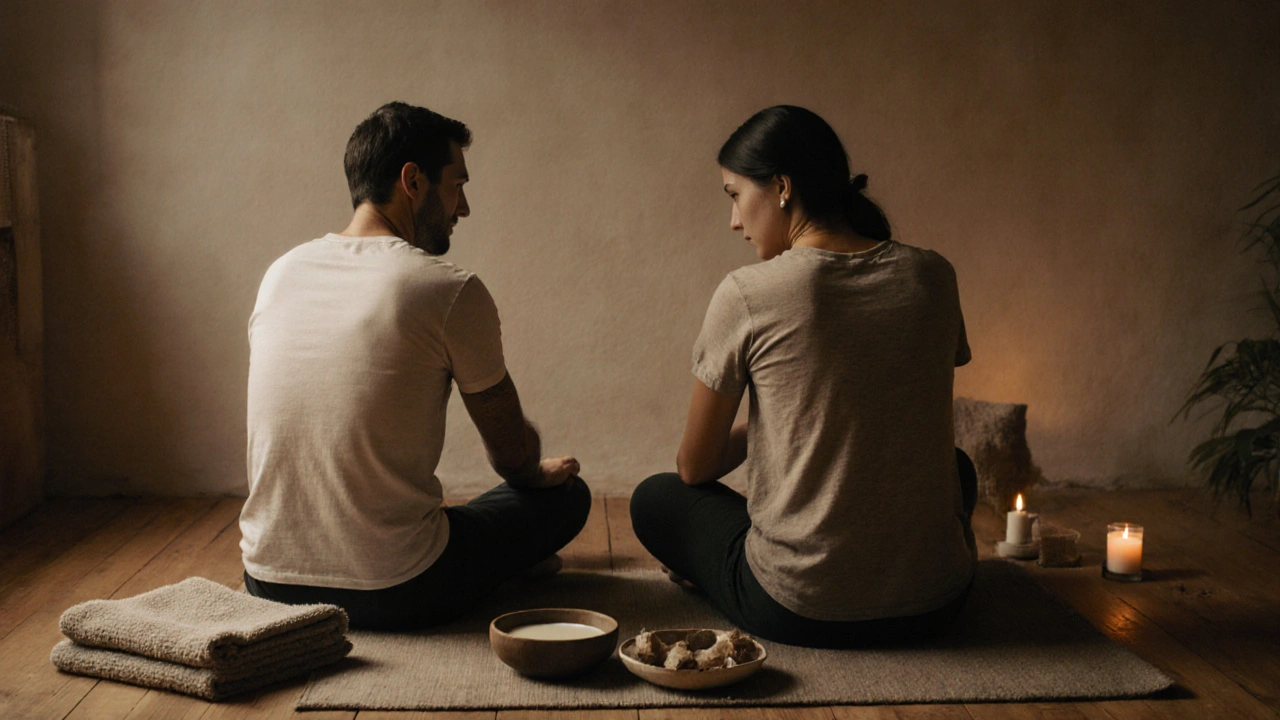
Enhancing Your Experience with Body Massage
Adding Complementary Practices
Pair massage with deep breathing, meditation, or a warm bath afterward. Stretching gently after a session helps maintain flexibility. Hydration is key-drink water to help your body process released metabolic waste.
Collaborative or Solo Engagement
Massages can be deeply personal or shared. Giving a massage to a partner builds connection. Getting one yourself is an act of self-care. Neither is better-just different. Some people find solo self-massage with a foam roller helps maintain progress between professional sessions.
Using Tools or Props
Massage balls, foam rollers, and handheld massagers are great for daily maintenance. But they’re supplements, not replacements. Nothing replicates the intuition of a trained human touch.
Regular Engagement for Benefits
One session can feel amazing. But lasting change comes with consistency. Try once a month for general stress relief. If you have chronic pain, weekly or biweekly sessions may help. Think of it like brushing your teeth-small, regular care adds up.
Finding Resources or Experts for Body Massage
Researching Qualified Experts
Use directories like CNHC or FHT in the UK. Read reviews that mention professionalism, hygiene, and communication-not just "it felt good." Ask about training, experience, and specialization. A good therapist will be happy to answer questions.
Online Guides and Communities
Reputable sources include the American Massage Therapy Association (AMTA) and the International Massage Association. YouTube has tutorials, but stick to channels run by licensed therapists. Avoid influencers selling miracle cures.
Legal or Cultural Considerations
In the UK, massage therapists must follow health and safety laws. Some religious or cultural groups have specific views on touch. Always respect personal boundaries. A good therapist will adapt to your comfort level.
Resources for Continued Learning
Books like The Art of Massage by Dr. John Harvey Kellogg or Massage Therapy Principles and Practice by Susan Salvo offer solid foundations. Online courses from accredited schools can deepen your understanding if you’re considering training.
Conclusion: Why Body Massage is Worth Exploring
A Path to Calm
Body massage is one of the oldest, simplest, and most effective ways to care for your body and mind. It doesn’t require pills, machines, or complicated routines. Just human touch, time, and attention.
Try It Mindfully
Start small. Book a 30-minute session. Try a self-massage after work. Listen to your body. If it helps, keep going. If it doesn’t, that’s okay too. There’s no right way to feel-only your way.
Share Your Journey
Tried body massage? Share your experience in the comments. Follow this blog for more practical wellness tips. Explore massage and let us know how it goes.
Some links may be affiliate links, but all recommendations are based on research and quality.
Word count: 1,723
Suggested Visuals
- A serene massage room with soft lighting and a person lying on a table, covered with a sheet
- Hands applying oil to a back during a Swedish massage
- An elderly person receiving a gentle foot massage
- Two people giving each other a back massage at home, smiling
- A close-up of a massage ball being used on a foot
Suggested Tables
- Comparison of Body Massage vs. Related Practices
- Key Benefits of Body Massage
- Safety Tips for Body Massage


